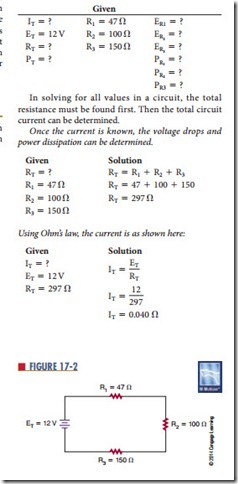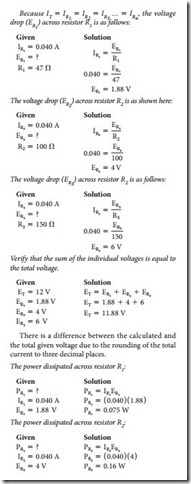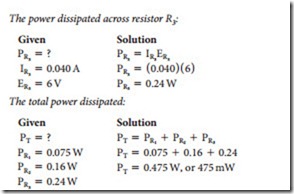This chapter applies information from the last few chapters to the solving of all unknowns in these three basic types of circuits. Voltage dividers can make available several voltages from a single voltage source. Voltage dividers are essentially series circuits with parallel loads. This chapter helps the student understand how significant voltage dividers are as an application of series circuits and how to design one for a specific application.
Series Circuits
A series circuit (Figure 17-1) provides only one path for current flow. The factors governing the operation of a series circuit are as follows:
1. The same current flows through each component in a series circuit.
example: Three resistors, 47 ohms, 100 ohms, and 150 ohms, are connected in series with a battery rated at 12 volts. Solve for all values in the circuit.
The first step is to draw a schematic of the circuit and list all known variables. See Figure 17-2.
Questions
1. What is the formula for total current in a series
circuit?
2. What is the formula for total voltage in a series circuit?
3. What is the formula for total resistance in a
4. What is the formula for Ohm’s law?
5. Four resistors, 270 ohms, 560 ohms, 1200 ohms, and 1500 ohms, are connected in series with a battery rated at 28 volts. Solve for all values of the circuit.



